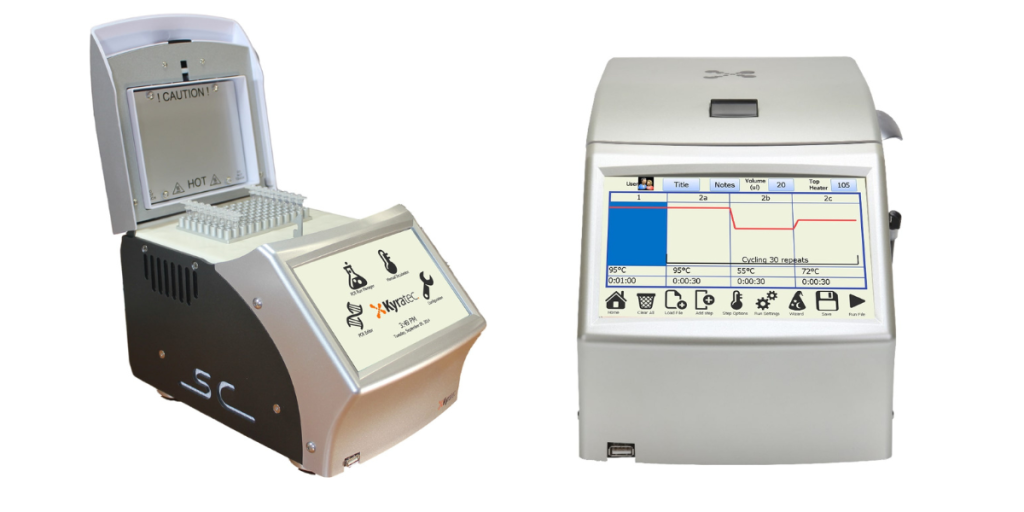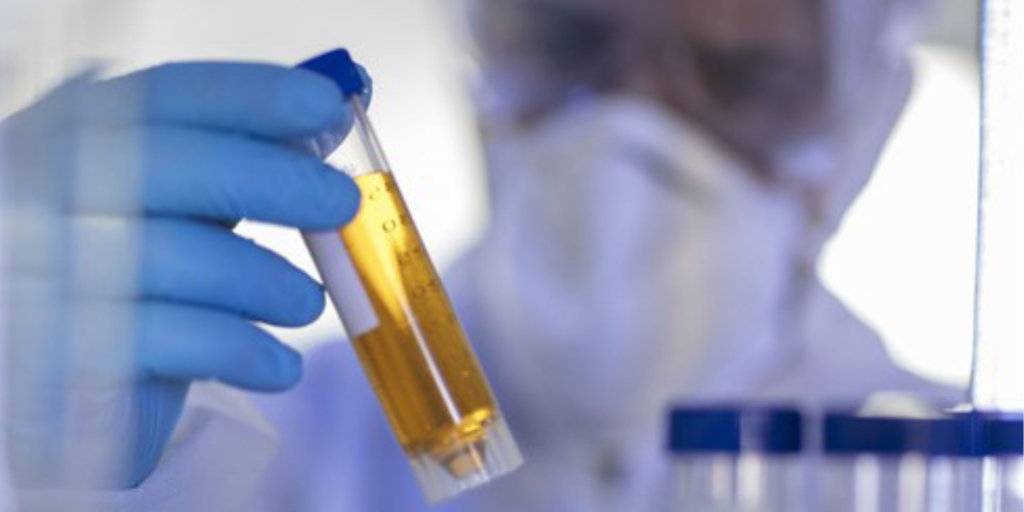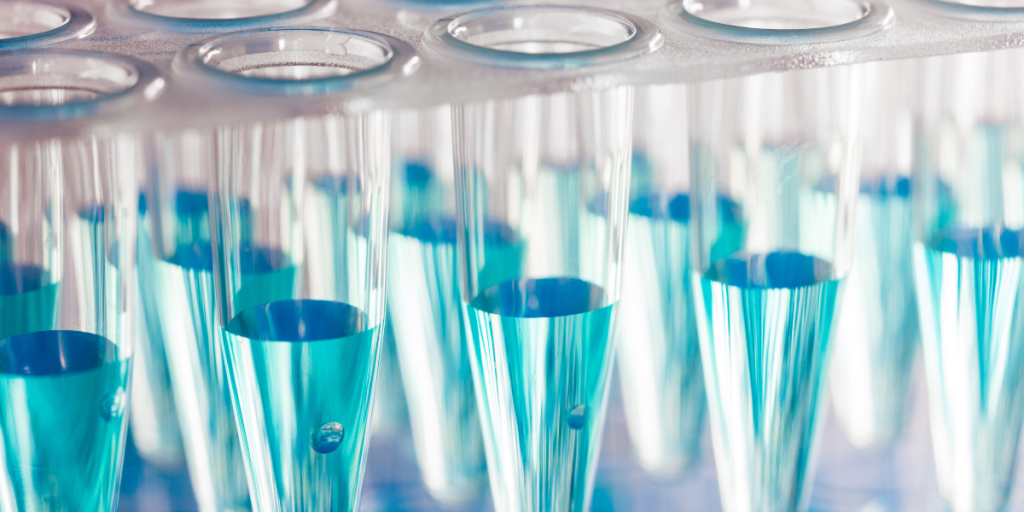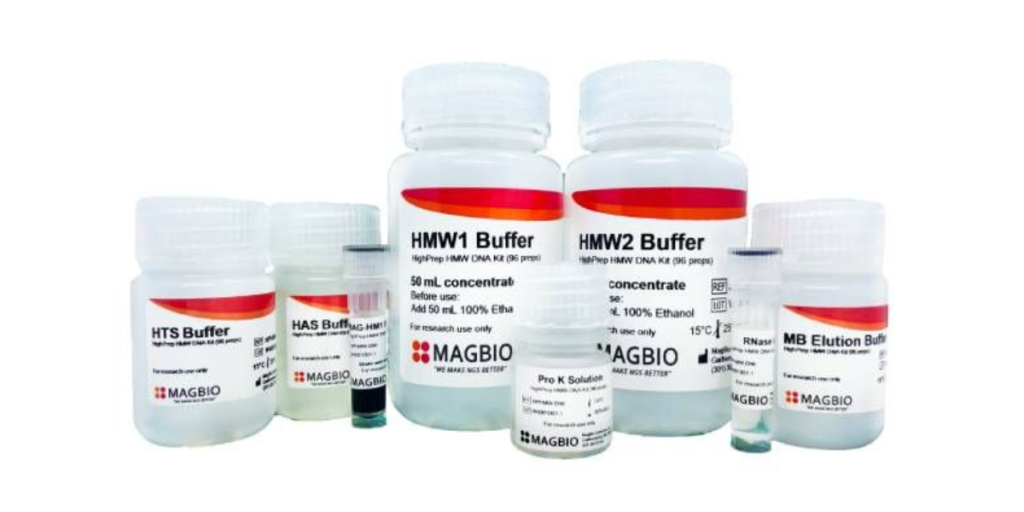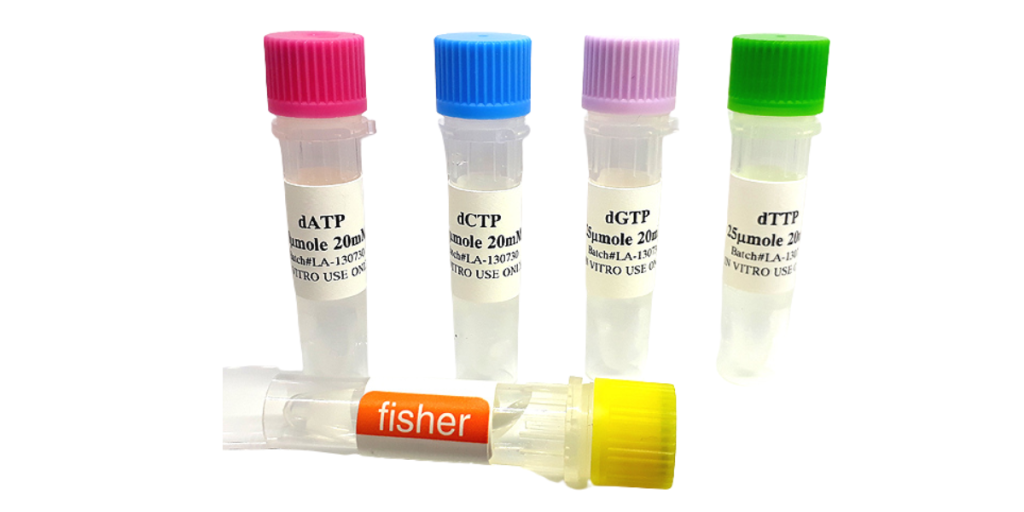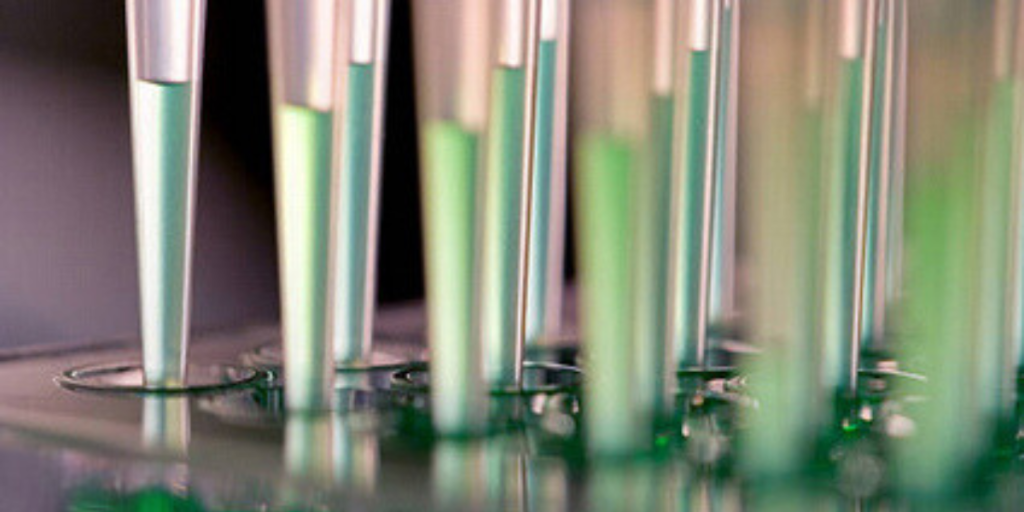Polymerase chain reaction (PCR) has become a cornerstone in microbiology and molecular biology. Whether you are identifying pathogens, studying genetic mutations, or cloning DNA, PCR is essential. If you’re running a microbiology lab, you’re probably familiar with its importance. However, fully understanding PCR and its equipment can help you improve your lab’s performance and efficiency. In this guide, we’ll cover everything you need to know about PCR, from its definition to how it works and the tools you need.
What is a polymerase chain reaction?
Polymerase chain reaction, commonly shortened to PCR, is a laboratory technique used to amplify small amounts of DNA. In simple terms, it makes many copies of a particular DNA sequence so it can be analysed or used in research.
The definition of PCR involves three core components: DNA, primers, and a DNA polymerase enzyme, essential for synthesising new DNA strands. During PCR, DNA is repeatedly heated and cooled in cycles; each cycle doubles the amount of DNA in the sample, enabling you to obtain millions of copies within hours.
The purpose of PCR
The goal of PCR is to generate enough DNA for further analysis or experimentation. PCR is especially useful when starting with very small amounts of DNA, such as from a single cell. In clinical settings, PCR enables the detection of specific pathogens or genetic mutations from minute biological samples.
What does PCR do? It amplifies DNA so scientists and researchers can study it in detail. Without PCR, many types of DNA analysis would be impossible due to not having enough tissue samples.
PCR applications
PCR’s versatility makes it invaluable across multiple fields:
Medical diagnostics
One of the most common uses of PCR is diagnosing infectious diseases. For instance, PCR tests can detect viral RNA, such as in COVID-19 or influenza tests, with high precision. By amplifying genetic material, even tiny traces of a virus can be identified.
Forensics
PCR is also widely used in forensics. Crime scene samples often contain tiny amounts of DNA. By using PCR, forensic scientists can amplify the DNA enough to generate a usable profile for identification purposes.
Genetic research
In research labs, PCR is fundamental for gene cloning and sequencing. It allows researchers to make copies of genes for studies on gene function and regulation.
Biotechnology
PCR is instrumental in genetic engineering. It helps scientists manipulate genes by providing ample copies of a DNA sequence to insert into different organisms.
Environmental testing
Another PCR purpose is detecting microorganisms in water, soil, and air. This is important for monitoring environmental safety and ascertaining the presence of contaminants or harmful pathogens.
Equipment involved in PCR testing
Running PCR requires specialised equipment. Here are some common PCR consumables and equipment utilised:
Thermal cycler
The Kyratec SuperCycler™ Trinity thermal cycler.
The thermal cycler, which is also sometimes referred to as a PCR machine, is the backbone of the PCR process. It precisely controls the temperature changes required during PCR cycles. Different models may offer features such as gradient functions or faster cycle times, depending on your needs.
DNA polymerase
Fisher Biotec manufactures TAQ polymerase and various other custom reagents.
DNA polymerase is the enzyme responsible for synthesising new DNA strands during PCR. Taq polymerase enzyme, a specific type of DNA polymerase sourced from the heat-resistant bacterium, is commonly used in this process because it can withstand the high temperatures required for denaturation in PCR.
PCR primers
Custom PCR primers and solutions can be manufactured by Fisher Biotec.
Primers are short sequences of DNA that bind to the target sequence. They guide DNA polymerase to the right location in the DNA to start replication. PCR primers have various applications including DNA amplification for cloning, detecting pathogens in medical diagnostics, and analysing genetic variation in research studies.
Extracted DNA sample
Magbio’s HighPrep High Molecular Weight DNA Extraction Kit.
The DNA sample is what you want amplified. This could be extracted from blood, tissues, or even environmental samples using specialised DNA extraction kits, which typically employ a series of steps involving cell lysis, removal of contaminants, and isolation of the DNA.
It is important to ensure the DNA is extracted correctly and purified for optimal PCR results. Impurities or degraded DNA can negatively impact the efficiency and accuracy of the PCR. Proper extraction techniques help eliminate inhibitors that may interfere with the polymerase activity, ensuring that the PCR process can proceed smoothly.
Nucleotides (dNTPs)
Fisher Biotec’s ready-to-use dNTP mixes.
Nucleotides are the building blocks of DNA. In PCR, free nucleotides (dNTPs) are needed for the polymerase to construct new DNA strands. During the extension phase of PCR, the polymerase incorporates these dNTPs into the growing DNA chain, matching each nucleotide with its complementary base on the template strand. This process not only facilitates the synthesis of new DNA but also ensures that the resulting strands are accurate copies of the original template.
PCR Buffers
Fisher Biotec also manufactures custom PCR buffers.
PCR buffers play a vital role in PCR by maintaining the pH balance and providing essential ions that are necessary for the activity of DNA polymerase. Optimal pH is vital for the stability and functionality of the enzyme, as even slight deviations can hinder its performance.
How does PCR work? Here’s the step-by-step process
Now that we’ve discussed the purpose of PCR and the required tools, let’s look at how PCR works. The process involves three main steps, repeated for about 20-40 cycles to achieve exponential DNA amplification, allowing for millions of copies to be generated from just a small initial sample.
Step 1. Denaturation
In the first step, the thermal cycler heats the DNA sample to around 95°C. This high temperature causes the double-stranded DNA to separate into two single strands, making the genetic material accessible for copying.
By converting the double helix DNA strand into single strands, the denaturation phase prepares the DNA template for primer binding. The complete separation of the strands ensures that there are sufficient accessible regions for the primers to anneal in the next step of the PCR process.
This high-temperature step typically lasts for 20 to 30 seconds, depending on the specific protocol, allowing for efficient and thorough separation of the DNA strands. The effectiveness of denaturation is vital, as incomplete separation can lead to poor amplification and lower yields of the desired DNA product.
Step 2. Annealing
After the denaturation step, the temperature of the PCR reaction is lowered to approximately 50-65°C, depending on the specific primers used. This cooling phase is essential because it allows the primers, which are short sequences of nucleotides designed to match the target DNA sequence, to bind or “anneal” to their complementary sequences on the now single-stranded DNA templates.
During this step, the primers will hybridise with the DNA strands at specific locations flanking the target region. The success of this annealing process is critical for ensuring that the correct segment of DNA is targeted for amplification.
The annealing step typically lasts for 20-40 seconds, providing enough time for the primers to form stable interactions with the target DNA. This specific binding is what ultimately dictates the precision of the PCR process, as the primers serve as starting points for the DNA polymerase to initiate replication of the desired segment in the following step.
Step 3. Extension
In this final step of PCR, the temperature is raised to around 72°C, which is the optimal temperature for Taq polymerase, the enzyme responsible for synthesising new DNA strands. During this phase, Taq polymerase binds to the primer-DNA complex that was formed during the annealing step.
Once bound, the polymerase begins adding deoxynucleoside triphosphates (dNTPs) to the growing DNA strand, following the template strand to ensure that the new strand is complementary to the original sequence. The enzyme moves along the template DNA, catalysing the formation of phosphodiester bonds between the nucleotides, thus extending the new DNA strand.
This extension process typically lasts for about 30 seconds to several minutes, depending on the length of the target DNA being amplified. Taq polymerase is particularly effective because it can synthesise DNA rapidly, enabling the amplification of longer fragments of DNA efficiently. As the polymerase continues to add nucleotides, it effectively duplicates the target region of DNA, leading to a significant increase in the amount of DNA present in the reaction mixture.
These three steps, denaturation, annealing, and extension, are repeated multiple times. With each cycle, the number of DNA copies doubles, leading to an exponential increase in the DNA amount.
Troubleshooting common PCR issues
Even though PCR is a widely used technique, issues can arise. Here are some common issues that may arrise:
Non-specific amplification
Non-specific amplification can occur if primers bind to unintended locations on the DNA. To avoid this, make sure your primers are well-designed, with optimal length and specificity.
Low yield
Low yield is a common issue, often due to poor DNA quality or inefficient reaction conditions. Ensure your DNA sample is properly extracted and your thermal cycler is calibrated and well-maintained, with the settings optimised.
Primer dimer formation
Primers can sometimes bind to each other instead of the target DNA, forming primer dimers. Redesigning your primers or optimising the annealing temperature can help resolve this problem.
Contact Fisher Biotec for all your PCR needs
PCR has revolutionised molecular biology, providing a fast, reliable way to amplify DNA. Whether you are diagnosing diseases, studying genetic material, or conducting environmental tests, PCR plays a critical role. Understanding the definition of PCR, its applications, and the tools involved can help you improve the efficiency and accuracy of your work.
When purchasing PCR equipment, make sure you invest in high-quality equipment and reagents. This can make the difference between success and failure in your PCR work. At Fisher Biotec, we supply Australian laboratories with all sorts of bespoke PCR equipment and consumables tailored to their needs.
If you’re in need of high-quality PCR tools, don’t hesitate to reach out to our friendly team today!
